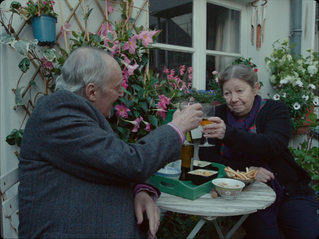Duel
- Jessica Moore

- Dec 1, 2021
- 3 min read
Stephen Spielberg, 1971

Perhaps no one would have predicted the “monstrous automobile” to bear such gravity in the last fifty years. Technophobia seems typically reserved for tools of surveillance, robotics, data-harvesting and cybernetics. And yet, it is the automobile — the mundane, almost ordinary object, at least in the context of those aforementioned — that crops up most dramatically in cinema: The Car, Christine, Crash, Death Proof, and Julia Ducournau’s latest instalment, Titane. Titane is a highly conceptual fable of fetishisation, impersonation, gender collapse, all narratively related to what can only be described as “automobile erotica” (sex and impregnation with an autonomous car). With Titane, Ducournau depicts the allure of discomfort, a hyper-awareness of one’s body; the act of relishing the physical sensation of disturbance, of flesh against steel. A phenomenological feast, and a favourite among critics, it earned this year's Palme d’Or.
Of course, the invention of the modern autonomous car is difficult to decontextualise from Elon Musk, Tesla, and the surrounding spirit of innovation that enables such unrestricted scientific endeavours. Machinery — oily, metallic — is “old” compared to the holographic shimmer that collects like space dust across so much of modern tech. Electric cars, like intuitive homeware, are increasingly minimalist, a string of silent exoskeletons that retain their own autonomy. And yet, cars, no matter how autonomous, remain markedly tangible, awkward, physical.
Notwithstanding the uncanniness of increasingly autonomous cars and technology, it remains timelessly thrilling to watch a film devoted to wrestling with the question: what disembodied malevolence can lurk beneath flickering headlights and a croaking engine? Or, in Ducournau’s Titane, what horrifying entanglements are possible between man and machine?
Departing from others of the “automobile horror” genre, Stephen Spielberg’s debut feature, Duel, is conceptually simple: a driver named David Mann, his red Plymouth Valiant, a gas truck, a cat and mouse chase, scarce dialogue, few peripheral characters, allusions to a failing marriage. What begins slowly as a gnawing, discordant cycle of overtaking and passing another driver, a choreographic dialogue of mutual irritation and frustration, turns into a furious, irrational pursuit, a murderous rampage from a faceless opportunist, one who, unable to be reasoned with, must simply be obliterated.
Duel crystallises many of Spielberg’s idiosyncrasies as a director, most important of all, the ways in which he carves something horrifying, and worse yet, imaginable, out of circumstantial banality. Indeed, it is not the likelihood of his narratives that frightens audiences, in fact, one is very unlikely to encounter such an irrationally predatory driver, but rather what could happen if such a situation occurred.

Of course, this same idea is echoed in his sophomore film, Jaws. It is not the (highly improbable) reality of a shark encounter that frightens audiences, Spielberg’s logic of horror is not designed to obscure our everyday sense of security. If one did encounter such an unlikely monster — compared to devils and spirits, perhaps encountering a homicidal trucker or great white is somewhat likely, or at least possible — they now have an idea of what that could look like. A new fear, however irrational, is born; sculpted into the imagination. Indeed, Spielberg is a master of cultivating unforeseen horrors, horrors that are just distant enough from mundanity to provoke uncharted fears. Prior to Duel, who would have thought to fear being pushed into an oncoming train by a tanker truck?
As per Spielberg’s perceptivity for the most horrifying of outcomes, what psychologists would name a sort of morbid catastrophising, he sees the worst outcome of situations and accentuates their atrocity. His camerawork attests to this; a menacing pastiche of mirror and bumper shots. He transforms the sunbaked Californian roadside into something richly, hellishly cinematic. Coated in flumes of black smoke, sweat and dust, Duel twists a simplistic plot into an aesthetic marvel; a tense and unlikely triumph over a sadistic, faceless driver, whom we can only identify as the groaning atrium of a gas tank, at odds with his unfortunate, utterly arbitrary, victim.

Fifty years after its release, as we occupy a world so technologically sophisticated, the premise of a greasy, smoking tanker truck remains rather unsettling; but why? Beyond its sensorial unpleasantness, experiencing such an anthropomorphised monster-machine provokes our basest instincts: our fear of the uncanny. Like looking into the lifeless eyes of a shark, the robotic shell of an AI, or a wax figurine, the psychological distress of encountering a “robotic” entity is precisely due to its reminiscence. Our confrontations with such familiar, though ultimately unknowable, objects are limited to the vulnerability of the irrational senses. Uncertain of the recipient of our gaze, we become all the more tempted to look. We stare into the watchful headlights of a truck in a dark tunnel — into a pool of oil.








Comments